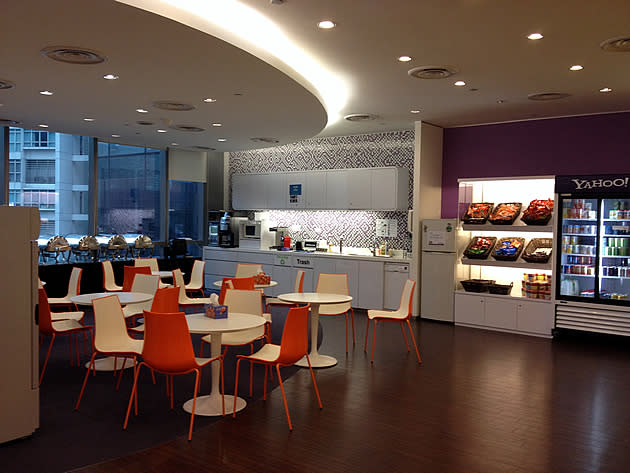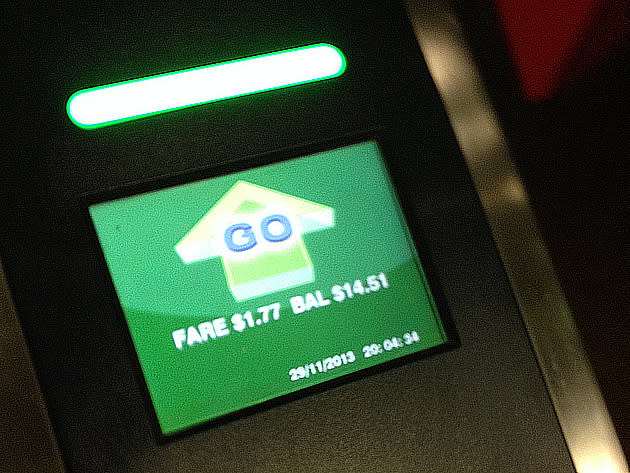Lessons from taking the $5 Challenge

Over the five weekdays of the last week of November (25th to 30th), I took on the $5 challenge.
Friends, colleagues and loved ones taunted me when I announced my decision to do this, with most saying, "Yeah, of course it'll be easy for you -- you've got free food at the office!" or "It's of course possible when you can claim cab rides from work!"
They've got a point. As a Yahoo, life is pretty good. Breakfast and lunch are free, as are snacks and drinks.
For the $5 challenge, however, I was determined not to "cheat" by indulging in the free food at the office -- after all, our friends who live on $5 for food and transport may not necessarily work at offices with pantries that are as well-stocked as mine.
And it helped that I was on afternoon shift last week -- starting at 3pm meant I would go without both breakfast and lunch at the office, and I wouldn't be tempted to indulge in any of the free food, snacks or drinks available. Since I was not starting earlier in the morning, it also meant I would not be able to take advantage of the free train ride to work -- the ongoing trial programme allowing commuters tapping out at train stations around town for free before 7:45am on weekdays.
That train bit turned out to be pretty important, because I live in Sembawang. My journey to work involves a roughly 10-minute walk to the station, followed by a 45-minute train journey from there to Tanjong Pagar, where the office is. In this era of distance-based fare, my journey to work sets me back by $1.77.
Multiply that by two (the trip back), and I fork out $3.54 just on travel to and from work alone. That's about 70 per cent of my $5 budget already.
So what does one eat when one is left with $1.46 for food for the entire day?
Check out my Tumblr post summing up the breakdown of what I ate and how I travelled to stay within $5 here.
So if you're still with me after reading all that, here's what I learned:
If you haven't got a lot of money, you really have to plan your expenses very carefully. There really was no room for unplanned emergencies or situations -- so when they happened (to take the simple example of my being late for my meeting), I had no choice but to bust my budget. This also means that if you were to, say, get into an accident, suffer a serious injury or fall violently ill, all the follow-up steps require potentially large outflows in cash -- cash that you simply might not have lying around. Also, if you're not earning a lot of money, you're unlikely to have much by way of savings, or have any to sink into any substantial insurance plans, so that option goes out the window for unplanned and costly situations like these. I personally went through this -- right after my graduation two-plus years ago, I was paying through the nose to wean myself off my interest-bearing bank loan before even being able to consider the notion that I might need to look for some kind of financial protection. And what if something happened to me between 2011 and then? To adopt gamer speak, the phrase "good game" comes to mind.
The nutrition in your diet may suffer on occasion, especially if you lack proper planning in your grocery purchases. My diet for my first day can certainly attest to that fact, although to be fair I could possibly have made room for a chicken breast or some minced meat to cook up on one of the days last week, to ensure that I didn't only have meat on Friday. Instant noodles are a definite go-to for many who live below the proverbial line. However, as it was for me on a couple of occasions last week, it's quick, fills you up and is fairly tasty too, except it doesn't do much for one's health, of course. Having supported myself ever since my mid-teenage years, I frequently found it easier to cook instant noodles at home as it was fast, especially when I was lazy, and I'm only thankful that now I have enough to spend on a more varied and healthier diet.
Public transport in Singapore is wickedly expensive. I felt this especially because of how far away from the CBD I live, and, thanks to distance fare, I pay a lot to travel to work by train ($3.54 a day, $1.77 each way). Don't even suggest the bus, which would take me one and a half times longer, and cost at least 22 cents more, and also be subject to peak hour traffic conditions. You might ask, "What's $2 in the grander scheme of things, especially with how much it costs to drive?" and I must admit I did, too, before I became restricted to $5 a day. Cycling isn't an option available to people like me who live too far away from work either. And where's the money for the bicycle going to come from first? I have become painfully aware of how much I am spending on transport, I wonder how the poor can afford to commute by public transport. It's no wonder The New Paper ran a story on elderly workers who sometimes sleep over at their work places to save on transport to and fro. I used to receive $20 and $50 transport vouchers from the government when I was in Secondary school, and that definitely did help. I deeply mourned the first day I heard the single "beep" when I tapped my student EZ link card that signalled that my student concession had been cut off! So I hope people living on low incomes are similarly receiving help with their public transport expenses the way I did during my schooling years.
So before this gets longer than it already is, I'll end by saying that last week was more of an experience for me revisiting my past, but it surprised me how quickly I had forgotten what living on so little was like. It was only over the past week that I started to recall days when I would open my wallet to find it filled with receipts, a few membership cards, but no cash -- not even coins; or stop at an ATM, put my card in and realise I could not withdraw any money without my account balance going below the $20 minimum. It was definitely not a situation I would like to be forced into again.
I'm definitely thankful to earning enough that I can afford my own insurance plans -- even save a bit of my salary each month -- and also have some to spend on the occasional nice dinner, watch that film I was looking forward to catching, join a couple friends for late-night drinks on a whim, and stick my arm out to flag a cab down when I feel too tired to take the bus and spend 15 minutes walking home late at night.
Ultimately, I would also say that it is possible if extremely difficult to subsist on $5 a day for food and transport. It requires, however, conscientious planning and it is potentially damaging to one's health. I sincerely hope, though, to live to see a day where my fellow Singaporeans, particularly those with household incomes of below $1,500 a month, will not need to live this way.




